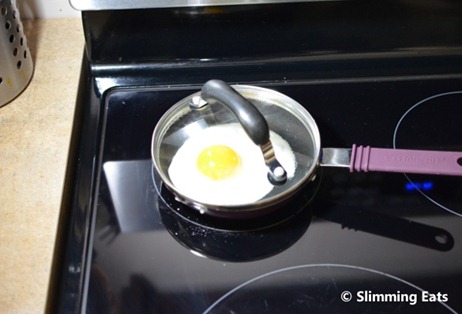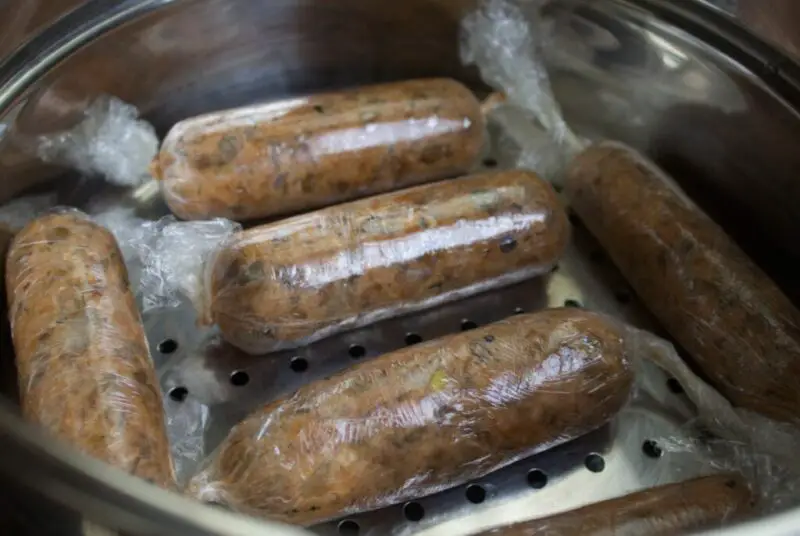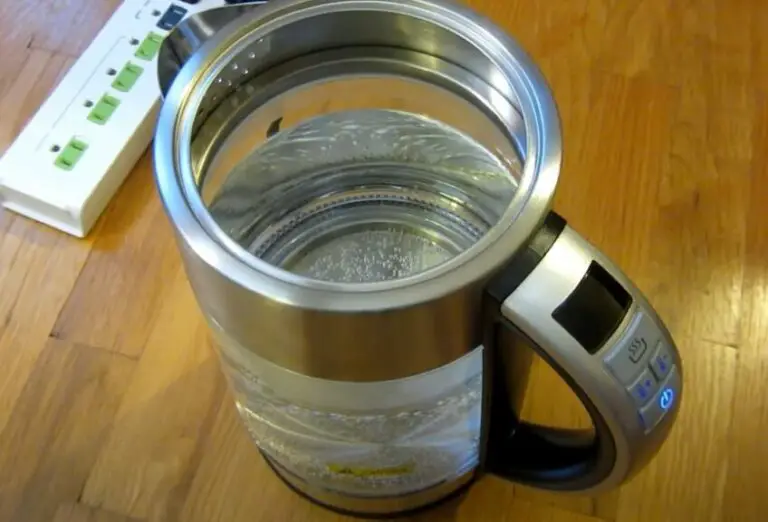Are you ready to learn how to cook dried spaetzle to perfection? With the right technique, this traditional German dish can be simple and incredibly delicious. Follow our step-by-step guide to discover the secrets of cooking dried spaetzle.
Key Takeaways:
- Cooking dried spaetzle can be intimidating but with the right technique, it’s actually quite simple.
- Spaetzle is a type of German egg noodle made from a simple dough consisting of flour, eggs, and water.
- Before cooking dried spaetzle, it needs to be properly rehydrated by soaking it in hot water for about 15-20 minutes.
- The most common method for cooking dried spaetzle is boiling it in salted water for 3-4 minutes until it floats to the top.
- Dried spaetzle can be served as is or pan-fried for extra flavor and crispiness. It pairs well with a variety of dishes.
What is Spaetzle?
Spaetzle is a type of German egg noodle that holds a special place in German cuisine. It is a simple yet versatile dish that can be enjoyed in various ways. The dough for spaetzle is made using just three ingredients: flour, eggs, and water. This basic combination creates a soft and chewy noodle with a hint of richness from the eggs.
One of the defining characteristics of spaetzle is the different shapes it can take. Traditionally, the noodles are small and dumpling-like, resembling tiny irregular shapes. These quaint noodle shapes are perfect for catching sauces, gravies, or soups. However, you can also find spaetzle in long, thin strands, similar to Italian pasta. This variation is great when stir-frying or pan-frying the noodles to add a crispy texture.
What is Spaetzle?
German egg noodles that come in various shapes and sizes.
| Type | Description |
|---|---|
| Small dumpling-like | Perfect for holding sauces and gravies. |
| Long thin strands | Ideal for stir-frying or pan-frying for a crispy texture. |
Spaetzle is a versatile ingredient that can be boiled and served with a variety of dishes or pan-fried to create a delightful side dish. Its neutral flavor profile allows it to complement a range of flavors and cuisines. Whether you prefer a traditional German recipe or want to experiment with different seasonings and sauces, spaetzle is a satisfying and comforting addition to any meal.
How to Prepare Dried Spaetzle
Before cooking dried spaetzle, it is important to properly rehydrate it. Follow these steps to prepare dried spaetzle:
- Place the dried spaetzle in a large bowl.
- Cover the spaetzle with hot water.
- Let it soak for about 15-20 minutes, or until it becomes soft and pliable.
- Once the spaetzle is rehydrated, drain the water.
- Pat the spaetzle dry with a kitchen towel.
By rehydrating the dried spaetzle, you ensure that it cooks evenly and has the ideal texture when it is ready to be served.
Why is Properly Rehydrating Dried Spaetzle Important?
Properly rehydrating dried spaetzle is crucial for achieving the best results when cooking. When the spaetzle is dry, it can be tough and chewy. Rehydrating it softens the noodles and allows them to absorb moisture, resulting in a tender and delicious finished dish. Skipping the rehydration step may lead to uneven cooking and a less enjoyable texture.
Alternative Rehydration Method:
If you are short on time, you can also rehydrate dried spaetzle by boiling it for a few minutes instead of soaking it. Bring a pot of water to a boil, add the dried spaetzle, and cook it for 2-3 minutes. Drain and pat dry before proceeding with the recipe.
Table: Rehydration Methods Comparison
| Rehydration Method | Time Required | Resulting Texture | Recommended Usage |
|---|---|---|---|
| Soaking in Hot Water | 15-20 minutes | Tender and soft | For optimal texture and flavor |
| Boiling | 2-3 minutes | Tender, but slightly firmer | When short on time |
Choose the rehydration method that best suits your needs and time constraints. Both methods will yield delicious cooked spaetzle, but soaking in hot water generally produces a softer texture. Experiment with both to find your preferred method.
Cooking Dried Spaetzle
When it comes to cooking dried spaetzle, the most common method is boiling. Begin by bringing a large pot of salted water to a boil. While the water is heating up, carefully drop the dried spaetzle into the pot using a slotted spoon or a spaetzle maker. Boil the spaetzle for approximately 3-4 minutes, or until it floats to the top of the water.
Once the spaetzle is cooked, remove it from the pot and transfer it to a colander to drain off any excess water. Make sure to handle the cooked spaetzle gently to avoid breaking it apart. At this point, the spaetzle is ready to be incorporated into your favorite recipes or enjoyed as a standalone dish.
If you prefer a bit more flavor and texture, consider pan-frying the cooked spaetzle. Heat a skillet over medium-high heat and add some butter or oil. Once the butter has melted or the oil is hot, add the spaetzle to the skillet and cook for a few minutes, stirring occasionally, until it is golden brown and crispy.
Table: Cooking Dried Spaetzle
| Ingredients | Instructions |
|---|---|
| Dried spaetzle | Bring a pot of salted water to a boil. |
| Add dried spaetzle to the boiling water. | |
| Cook for 3-4 minutes, or until spaetzle floats to the top. | |
| Transfer the cooked spaetzle to a colander to drain. | |
| Optional: Pan-fry the cooked spaetzle in butter or oil until golden brown and crispy. |
Boiling dried spaetzle is a straightforward process that yields delicious results. Whether you choose to serve it as a side dish, incorporate it into soups and stews, or add it to your favorite German recipes, cooking dried spaetzle is a skill well worth mastering.
Serving Dried Spaetzle
Now that the dried spaetzle is cooked and drained, it’s time to serve this delightful German dish. There are a few ways to enjoy it based on your preference. For a simple yet delicious option, you can serve the spaetzle as is. The tender, chewy texture and mild flavor make it a versatile side dish that pairs perfectly with a wide range of main courses.
If you’re looking to elevate the flavors and add a touch of crispiness, you can pan-fry the cooked spaetzle. In a skillet, melt some butter or heat oil over medium heat. Add the cooked spaetzle and sauté for a few minutes until lightly golden and crispy. This method enhances the texture and brings out a delightful nutty taste.
Dried spaetzle is a versatile dish that can complement various traditional recipes. It goes particularly well with hearty stews like goulash, where the spaetzle soaks up the rich flavors of the sauce. Additionally, it pairs beautifully with roasted meats, creating a satisfying and comforting combination. For a lighter option, you can serve it alongside sautéed vegetables, bringing a delightful contrast in taste and texture to the plate.
Don’t be afraid to get creative with your spaetzle toppings and sauces. Sprinkle some freshly chopped herbs like parsley or chives for a burst of freshness. You can also try adding grated cheese, such as Parmesan or Gruyère, for a savory twist. The possibilities are endless, so experiment with different flavor combinations to find your favorite traditional spaetzle recipe.
FAQ
Is dried spaetzle difficult to cook?
Cooking dried spaetzle may seem intimidating, but with the right technique, it can be a simple and delicious dish.
What is spaetzle?
Spaetzle is a type of German egg noodle that is a staple in German cuisine. It is made from a simple dough consisting of flour, eggs, and water.
How do I rehydrate dried spaetzle?
To rehydrate dried spaetzle, place it in a large bowl and cover it with hot water. Let it soak for about 15-20 minutes, or until it becomes soft and pliable. Drain the water and pat the spaetzle dry with a kitchen towel.
How do I cook dried spaetzle?
The most common method for cooking dried spaetzle is boiling. Bring a large pot of salted water to a boil. Carefully drop the spaetzle into the water using a slotted spoon or spaetzle maker. Cook for about 3-4 minutes, or until the spaetzle floats to the top of the water. Drain the cooked spaetzle in a colander.
How should I serve dried spaetzle?
Once the dried spaetzle is cooked and drained, you can serve it as is or pan-fry it in a skillet with some butter or oil for added flavor and crispiness. Dried spaetzle pairs well with dishes like goulash, roasted meats, or sautéed vegetables.



